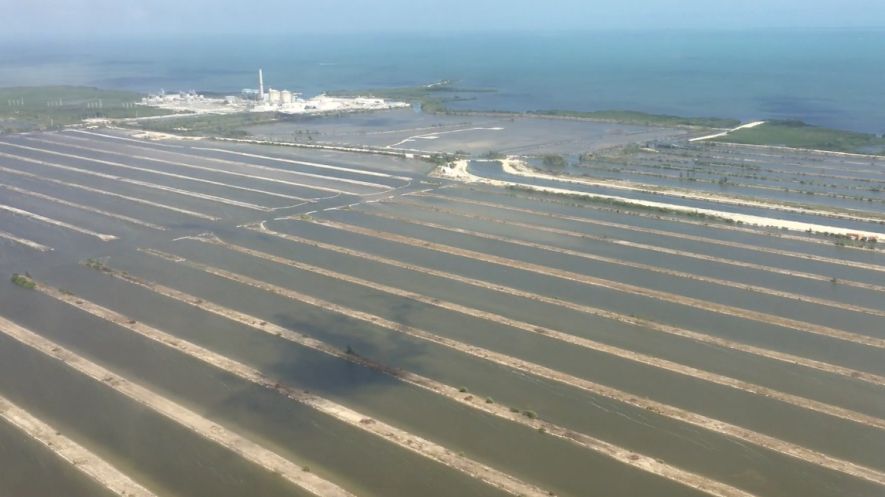According to a recent study, the Turkey Point nuclear power station appears to be leaking radiation into the waters off the coast of Miami, Florida.
The study by Dr. David Chin of the University of Miami found tritium levels up to 215 times higher than normal in the water of the Biscayne Bay. Tritium is a radioactive isotope produced by nuclear reactors. The site’s cooling canals, which are the part of the facility that appear to be leaking the radiation, are currently permitted to operate at 104 degrees—the hottest in the nation. He also looked at the migration of the plume of cooling canal water into area groundwater.
In February 2016, a state judge ruled that Florida environmental regulators and Florida Power and Light (FPL) were responsible for polluting South Florida’s groundwater due to the aging cooling canals. The judge stated that a massive underground saltwater plume threatened to contaminate drinking water for the Florida Keys and parts of Miami-Dade County. FPL estimated that the canals dump 600,000 pounds of salt into the Biscayne aquifer on an ongoing daily basis. This salt is, for now, the primary pollutant, but some are concerned that radiation could eventually be a bigger problem.
Turkey Point is went into operation in 1972, and was originally licensed for 40 years. This was extended by the U.S. Nuclear Regulatory Commission in 2013, allowing the plant to operate until 2033. The concern of nuclear watchdogs is that the reactors could crack from long-term exposure to radiation. Furthermore, the proximity of Turkey Point to Biscayne Bay could create a disaster due to tidal surge inundation during an extreme weather event, such as a hurricane — or even simply due to sea level rise caused by global warming!
Florida Power and Light (FPL), which operates the facility, has been fined numerous times for violations regarding Turkey Point’s spent fuel pools and , but the real stunner is that according to industry whistleblower Thomas Saporito, who worked at the location for there years, if the plant melted down, Miami would be uninhabitable for 50,000 years.
The study, including a form for providing Public Comment, is available here.





